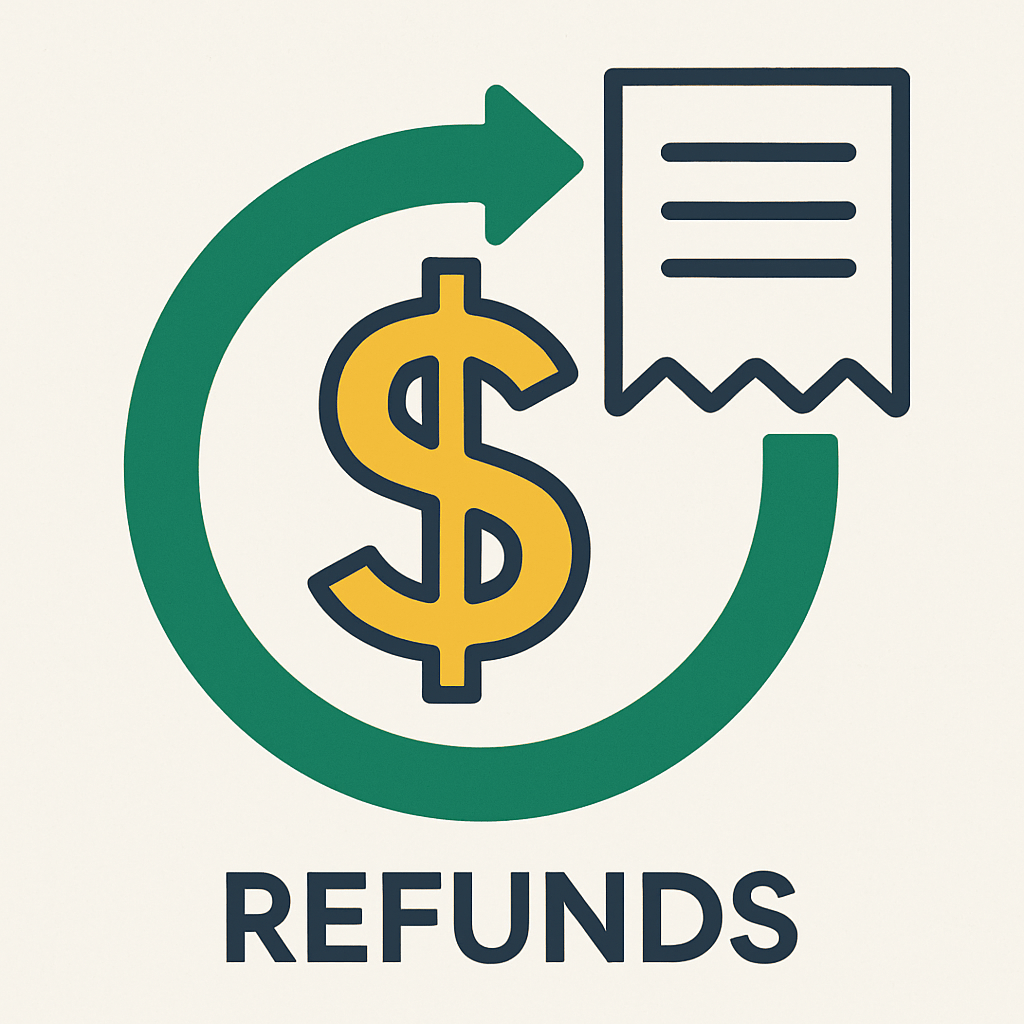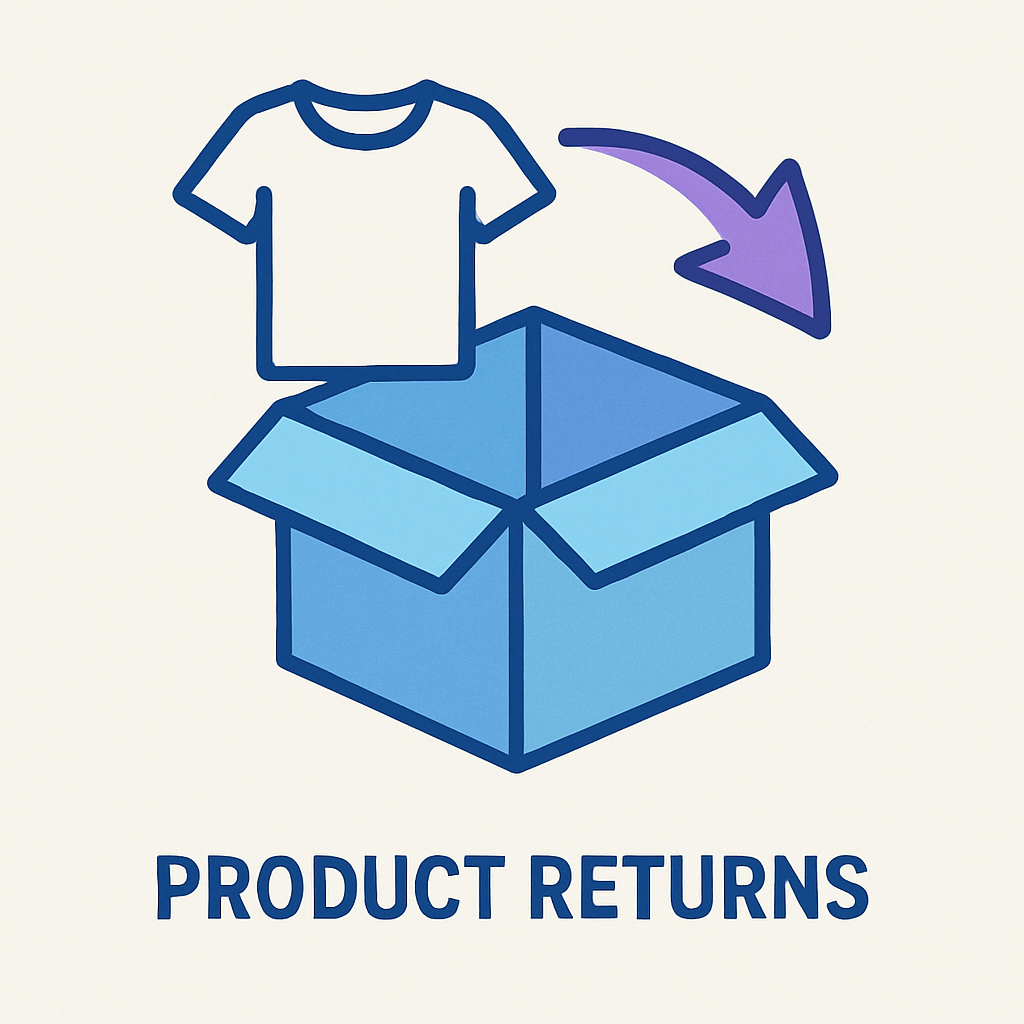Navigating Different Return Types: Take Backs, Credits, Refunds, & More

Return types are the different ways a product can be sent back and how you respond. Each one impacts your costs, compliance, customer experience, and the value you can recover. Below, we’ll break down common types, such as take-backs, credit, refunds, repairs, warranties, recalls, seasonal, and trial. You’ll get a clear, practical guide for when each applies and how to handle them carefully and consistently.
Why You Need to Understand Different Return Types
Returns don’t always work the same way. Different products, sales channels, and customer expectations mean you must sort returns by type. That way, you can decide what steps to take and when.
Modern Returns Are Incredibly Complicated
Retail returns today involve more than a customer simply dropping something off at the store. You now deal with returns from online orders, in-store purchases, lockers, mail-in, and even cross-border sales. Plus, service levels vary across carriers, and some returns are box-free or don’t need a label.
Product types add more layers. A jacket may just need a size swap. A phone might need diagnostic testing. Perishables or regulated items bring other challenges.
Returns also bring risk. Take-backs especially require extra care. Mismatched items, serial numbers, and condition disputes can all cause trouble. Some shoppers send items back regularly. Others try to return items that don’t match what was sold. You need to spot these cases quickly and respond with clear rules.
Cost Control & Customer Satisfaction
Return types shape how much you spend and what customers experience. Here’s what the numbers show:
- In 2024, retail returns in the U.S. hit $890 billion, or 16.9% of all retail sales.
- Processing a return can cost between 20% and 65% of the item’s value.
- On average, one return costs about $25 to handle.
- 82% of shoppers say return policies influence what they buy.
- 68% won’t purchase again after a bad return experience.
- 92% are more likely to return if the process is easy.
Refunds are one area where costs and customer expectations meet. Customers want speed and simplicity. You want to manage how much cash goes out. Having transparent policies and automation in place makes it easier to do both.
| Related Article: Mitigating Returns Fraud to Protect Retail Margins in Fast FashionReturns fraud cost retailers over $100B last year. See how fast fashion brands are fighting back with automation and smart policies. |
Return Types Directly Shape Policies & Workflows
Each return type has different rules. For example, warranty claims may require serial numbers, while trial returns might have wear-and-tear guidelines. Businesses often use different windows, conditions tiers, and eligibility checks based on the type.
Behind the scenes, return types also impact how systems are set up. That includes routing, how much inspection is needed, and how credits or refunds are issued. Some actions, like issuing a refund, could be automated. Others, such as a take-back, may need extra review.
There are also tax rules, warranty terms, and recall documentation to manage. Tracking each type keeps records clean and ensures returns are handled correctly.

| What is the meaning of sustainable return?A sustainable return minimizes waste, emissions, and excess packaging. It steers products toward repair, resale, or recycling instead of landfills—benefiting both the environment and your bottom line. |
8 Common Return Types
Return types aren’t all the same. How you handle a take-back is different from a warranty claim or a seasonal return. Knowing the difference allows you to implement better policies, set clearer expectations, and handle each case the correct way.
Take-Backs
Take-backs occur when the seller retrieves the item directly from the customer or site. This typically applies to B2B (Business-to-Business) orders, delivery errors, or large items.
When to Use:
- Mis-shipped items
- Failed deliveries or installs
- End-of-lease or vendor-managed inventory
How to Handle It:
Schedule a pickup, verify the item onsite, reconcile it with the original order, and decide if you want to restock or route it for triage.
| What is a reasonable return policy?A reasonable return policy gives customers enough time to try a product—usually 14 to 30 days—while setting clear rules on condition, proof of purchase, and what’s eligible. It should balance customer convenience with protection against abuse or excess costs. |
Return for Credit
This type offers the customer store or account credit instead of sending money back to their card or bank.
When to Use:
- Encourage repurchase
- Manage seasonal or open-box items
- Reduce the cash going out
How to Handle It:
Apply clear credit rules, like expiration dates or partial values, sync with your CRM (Customer Relationship Management) or loyalty program, and track the total liability.
Return for Refund
This is the most familiar return type. The money goes back to the customer via the original payment method.
When to Use:
- Defective or dead-on-arrival (DOA) items
- Customer remorse within the allowed window
- When required by law
How to Handle It:
Check eligibility, generate an RMA (Return Merchandise Authorization), run fraud checks, and make sure refunds meet timing promises and sync with payment systems.
Repairs, Exchanges, & Replacements
Instead of a refund, these return types aim to fix or swap the item.
When to Use:
- Defects or sizing issues
- When the product holds value and can be reused or resold
How to Handle It:
Run diagnostics, check parts availability, offer exchanges where needed, and restock any refurbished items if they’re still in good shape.
| Related Article: How to Get the Most out of Product Repairs & RefurbishmentsWant to save money and cut waste with returns? Learn how repairing and refurbishing items can lower costs, reduce CO₂ emissions by up to 70%, and even drive brand loyalty. |
Warranty Returns
A manufacturer or retailer covers warranty returns under specific terms.
When to Use:
- Within the warranty term
- When the issue matches covered failure types
- With proper proof or serial number
How to Handle It:
Validate the warranty, route to an authorized repair center, and track whether the item is fixed or replaced.
Warranty returns typically cost under 2% of sales. Also, each manually processed claim takes about 15 minutes and costs $3,750 for every 1,000 claims.

| Related Article: Why Your Warranty Process Isn’t WorkingFrustrated customers, lost claims, and policy confusion? This post shows how automation, clarity, and tracking can rescue your warranty process and boost brand trust. |
Recall Returns
Recalls are triggered by safety or compliance concerns and often required by regulators or brands.
When to Use:
- Regulatory notice
- Brand-initiated recall for safety or performance
How to Handle It:
Notify affected customers, provide prepaid return options, maintain proof of return, and document how the item was fixed or disposed of.
Seasonal Returns
These involve extended return windows tied to holidays or major promotions.
When to Use:
- Peak shopping seasons like Black Friday or year-end holidays.
How to Handle It:
Set dynamic windows, manage resale or markdown timing, and plan for alternate handling if the return arrives too late.
In fact, holiday return rates reached 15.4% in 2023. Furthermore, 49% of retailers added return fees, and 42% shortened return windows.
| How long is the average return policy?Most return policies last between 14 and 30 days. Some retailers extend this during holidays, while others shorten it for clearance or final-sale items. |
Trial or Satisfaction Guarantee Return
This type gives customers a risk-free period to try a product and return it if it doesn’t work out.
When to Use:
- Items like mattresses, fitness gear, or subscriptions where a trial increases sales
How to Handle It:
Set clear wear-and-tear guidelines, explain shipping rules, and plan how you’ll deal with open-box items that come back.
| What is a satisfaction guarantee?A satisfaction guarantee lets customers try a product risk-free. If they’re not happy within a set time—often 30 to 90 days—they can return it for a refund, replacement, or credit. |
How to Handle Returns for Each Type
Once you’ve identified the return type, the next step is handling it the correct way. That means setting clear rules, using the proper tech, and learning from the data you collect.
Tailor Returns Policies to Each Return Type
Different return types require different rules. Based on the type of product and risk, set clear return windows, condition tiers (new in box, open-box, lightly used), and proof requirements.
List expected outcomes on your product pages, checkout, and returns policy, such as how long it takes to get a refund or credit. Customers should know what’s eligible and what to expect before they hit “buy.”
You can also create a quick-reference table that maps SKUs (Stock Keeping Units) and sales channels to the return types allowed. It makes decision-making quicker and more consistent.
Use Technology to Your Benefit
Technology makes returns easier for both your team and customers.
Begin with a returns portal that asks the appropriate questions to determine the return type. This captures intent and automatically matches the return to the correct path.
From there, you can automate things such as:
- Labels or QR codes
- Carrier or service level selection
- Routing and slotting at receiving sites
- Credit or refund processing
Connect your RMS (Returns Management System) to order, warehouse, transportation, and finance systems. That way, every update (e.g., inventory, refund, or credit) is synced in real time.
It’s been reported that retailers who use data analytics for returns convert over 50% of returns into exchanges. Furthermore, automated systems track return rates and reasons and give insights into inventory and product updates.
| What is the ROI of sustainability?Sustainability can cut costs, boost loyalty, and reduce risk. Brands that reduce waste and improve efficiency often see higher margins, stronger reputations, and more long-term growth. |
Leveraging Data & Analytics to Better Handle Returns
Tracking returns by type lets you see what’s working and what isn’t. You’re able to monitor:
- Return rate
- Reason codes
- Time to complete a return
- Cost per return
- Recovery rate
- Return abuse frequency
Break that data down by product, channel, and customer group. It allows you to plan ahead, staff up when needed, and make changes where returns are too frequent or expensive.
You can also test changes, like shorter return windows or new fees, and measure how they affect conversion, average order value, and long-term customer behavior.

What to Remember About Return Types
Each return is different, and treating them that way ensures that you stay in control while keeping customers happy. From take-backs to trials, knowing how and when to use each type is essential to saving money and running returns efficiently.
Key Takeaways:
- Return types shape your policies, costs, and customer experience.
- Using the same process for every return leads to missed opportunities and higher expenses.
- Some types, like take-backs and recalls, need more hands-on steps. Others can be fully automated.
- Clear rules and good communication prevent surprises and reduce back-and-forth.
- The right technology gives you real-time visibility, faster processing, and better data.
Action Items:
- Map your most common return scenarios to the correct return type.
- Review your current policies and adjust them based on return type risk and cost.
- Set up or update your RMS to route each return type automatically.
- Add return type details (i.e., timelines and outcomes) to your product and policy pages.
- Track KPIs (Key Performance Indicators) like cost per return, recovery %, and abuse rates by return type.
| See how ReverseLogix can set you up to manage every type of return with ease. Request your personalized demo today! |
Works Cited
- Ecommerce Returns: Average Return Rate and How to Reduce It
- Returns Management: What Are the Six Hidden Costs of Returns
- Warranty Return Cost as a Percentage of Sales
- Warranty Claim Rate
- ‘Returnuary’ – After the Peak Shopping Season Comes the Busiest Return Month of the Year
- 7 Advantages of Automating the Returns Process for Retailers
